We used the clean and efficient Vienna metro system to travel to Schonbrunn Palace Gardens. Walking through one of the metro stations on our way to the palace, we noticed a colorful graffiti wall, the only graffiti in the station. Vienna takes a systematic approach to graffiti, identifying where it is permitted.

Thanks to a tip from a savvy traveler we met on our Budapest trip, we learned how easy it is to plan a metro route using Google Maps. We didn’t need to use the metro app Paul had downloaded.
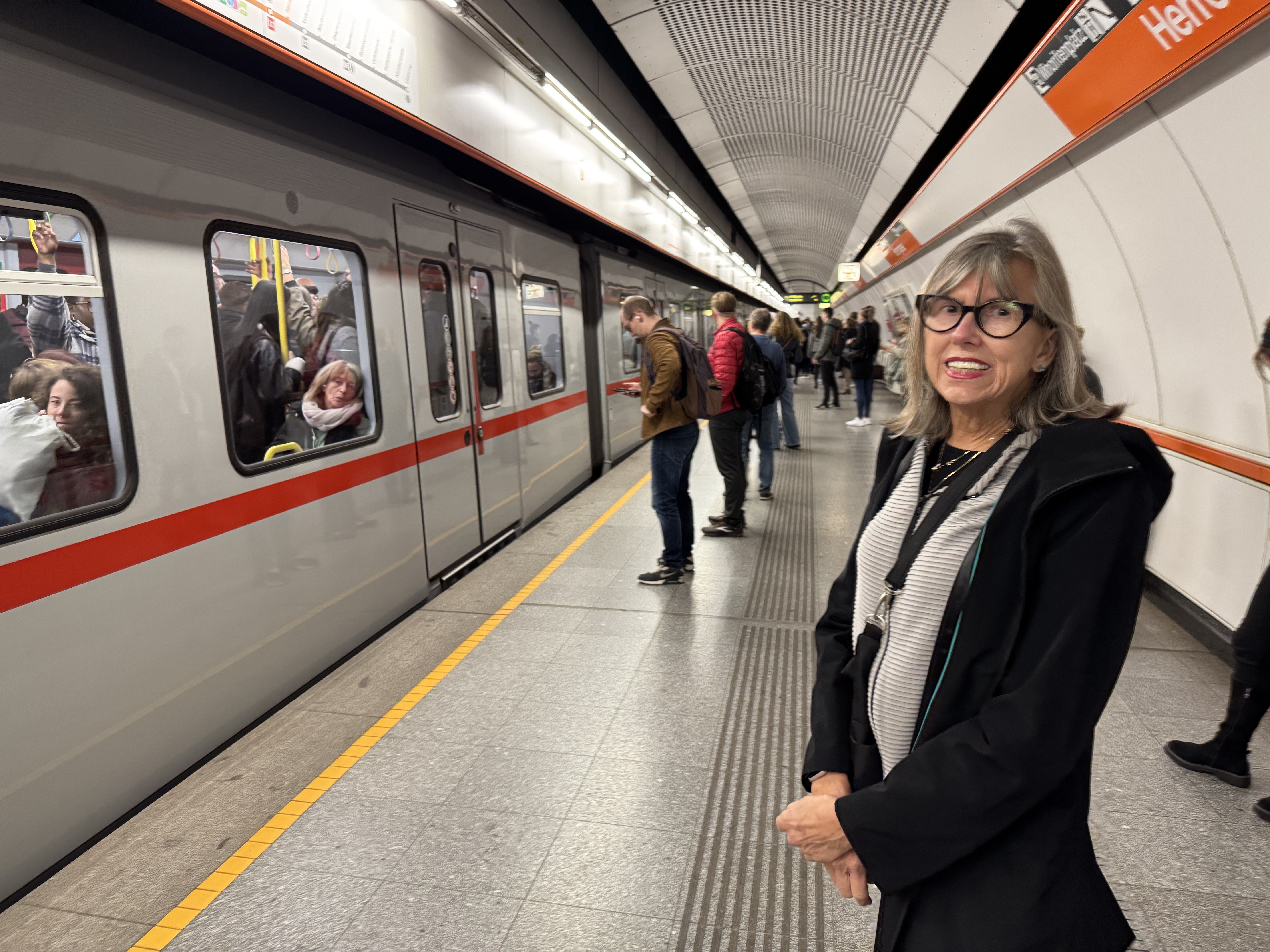
Schonbrunn Palace
After an easy metro ride and short walk, we arrived at Schonbrunn Palace. Until we got there, I didn’t realize how truly massive it is. The 1,441 room palace overlooks grounds that extend 1.2 km from east to west and one kilometer from north to south.
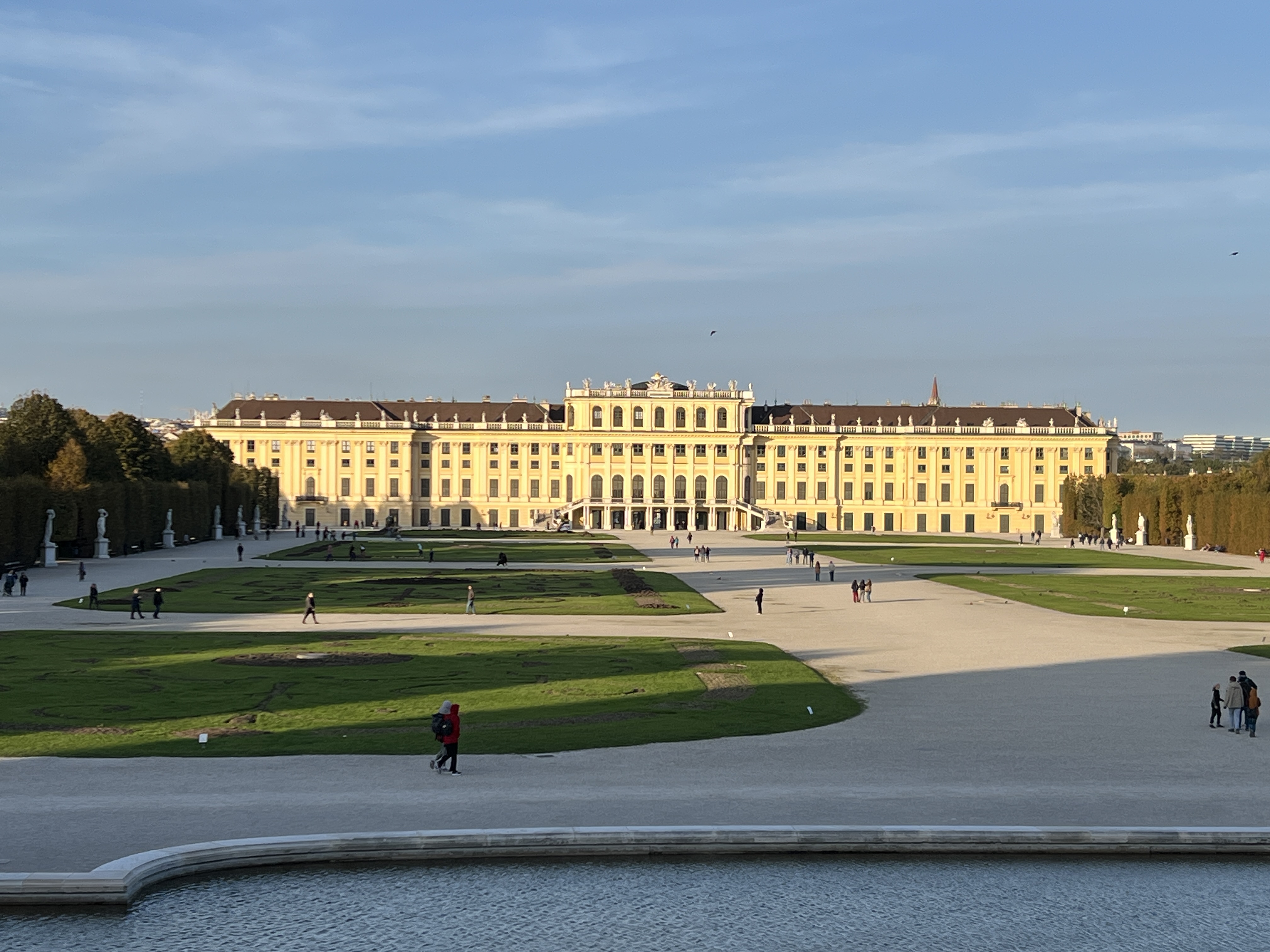
The Hapsburg rulers used the 1,441-room palace as their summer home from the time the land was purchased for hunting in 1569 until November 1918. The newly founded Austrian Republic then acquired the property and preserved it as a museum.
The gardens were placed together with the palace on the UNESCO list of World Heritage Sites in 1996.
Palace Gardens
After enjoying the beautiful Vienna city center, we went to the gardens to enjoy the Austrian countryside. Strolling around the magical gardens in the crisp fall air gave us a perfect break from the city. Although there must have been many people at this popular Vienna attraction, we often felt like we had the grounds to ourselves.
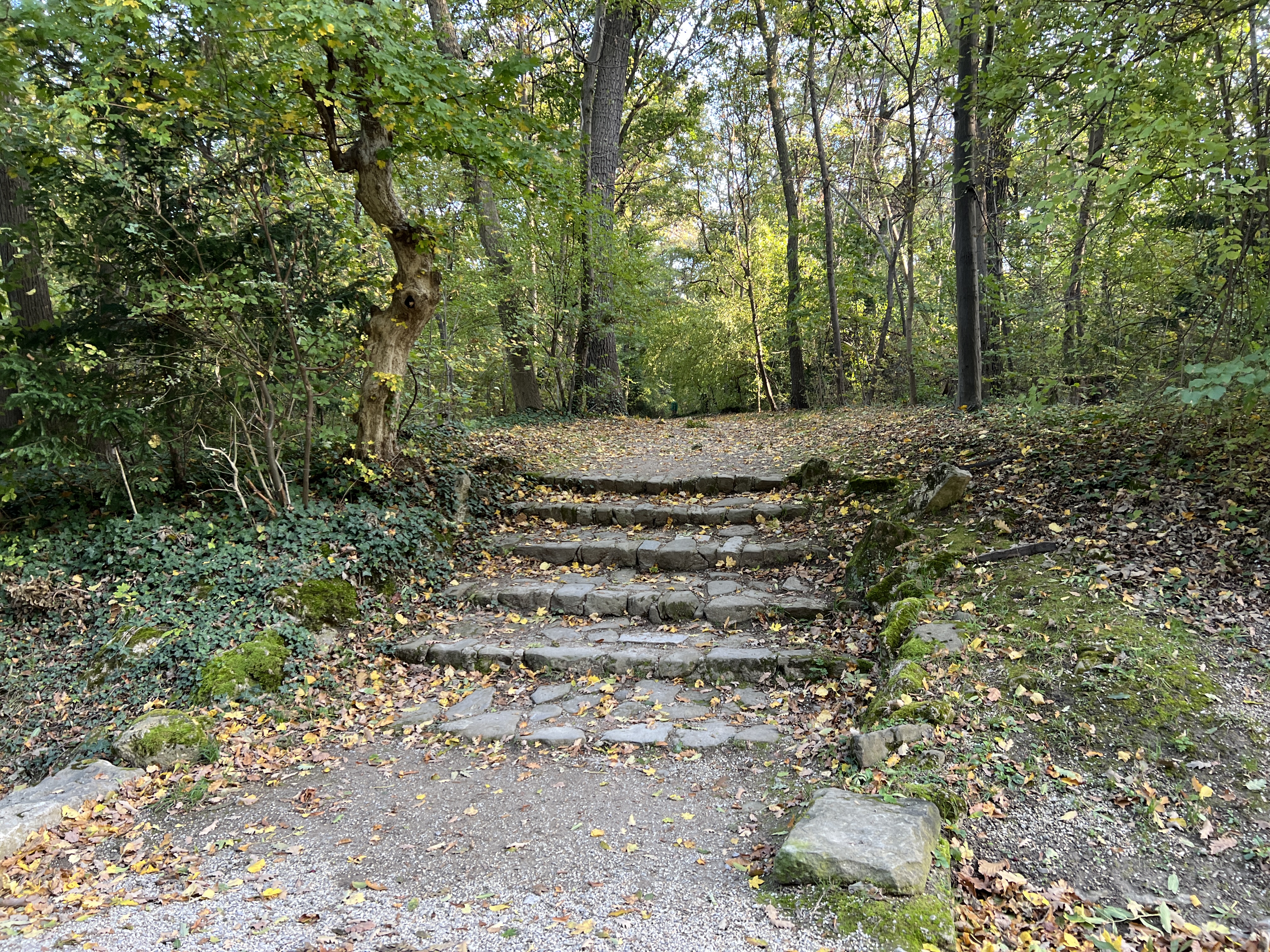
Roman Ruins
The first sculpture we saw looked ancient, and I wondered why it had aged so poorly. When I read the information plaque, I learned that the deteriorating pool and sculpture were designed to look that way. 18th century sculptors created picturesque ruins that “symbolized both the decline of once great powers and the preservation of the remains of a heroic past.”
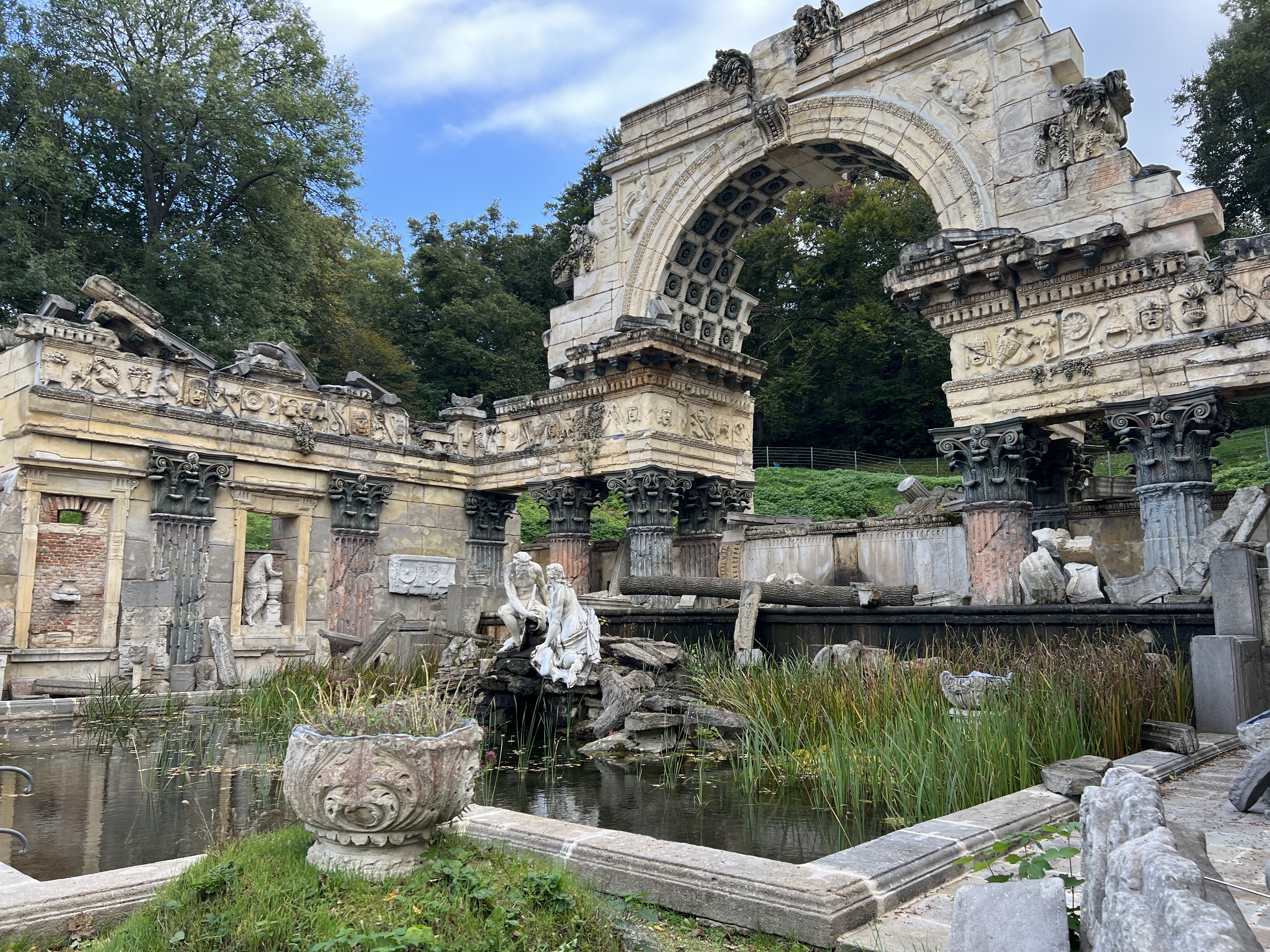
Obelisk Fountain
After seeing the ruins, we almost missed the beautiful Obelisk Fountain at the eastern edge of the garden. Although hieroglyphs on the side of the obelisk “supposedly” tell the history of the Hapsburg family, they weren’t deciphered until after the obelisk was built.
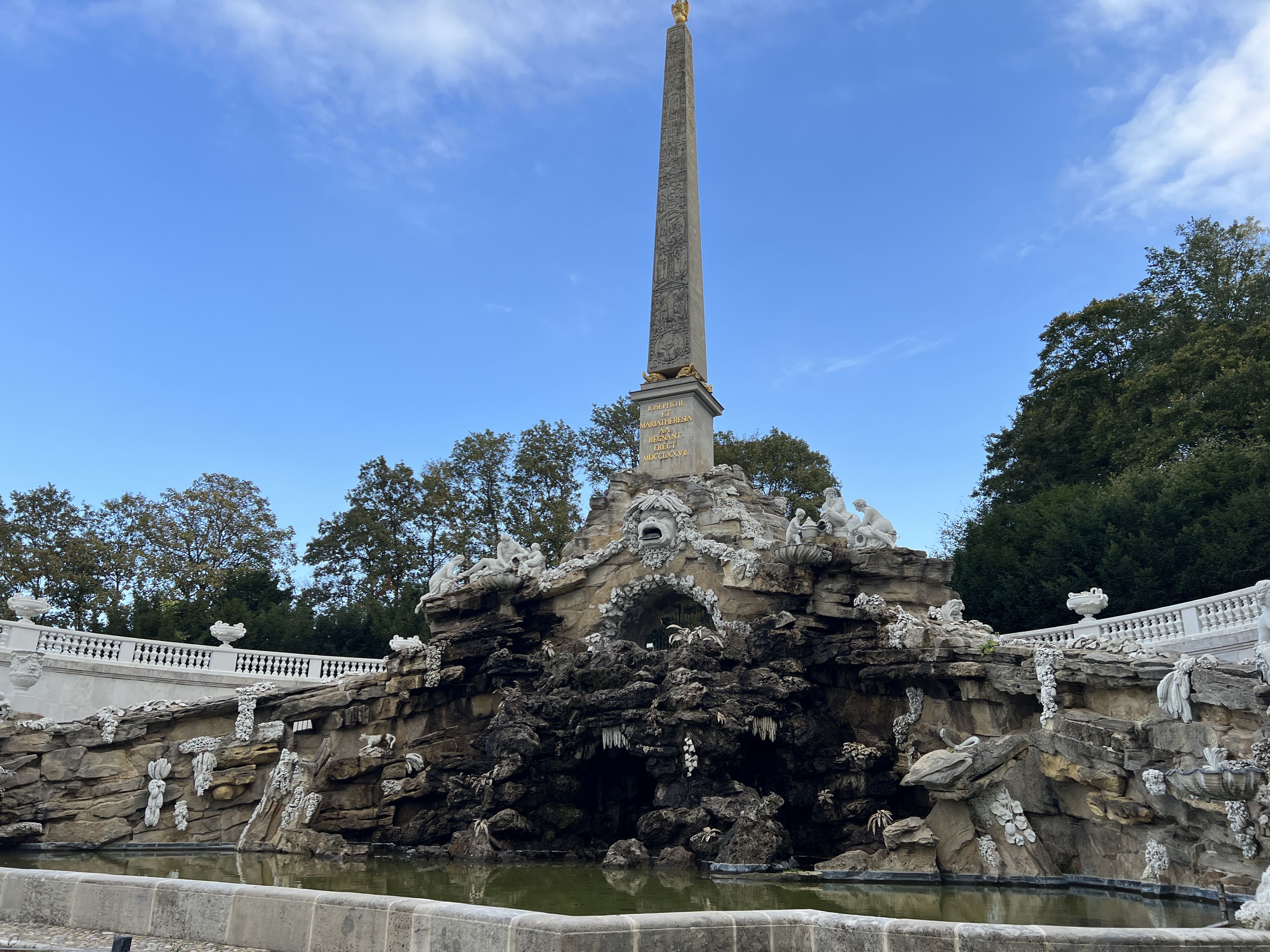
The obelisk rests on the backs of four golden turtles to represent stability.
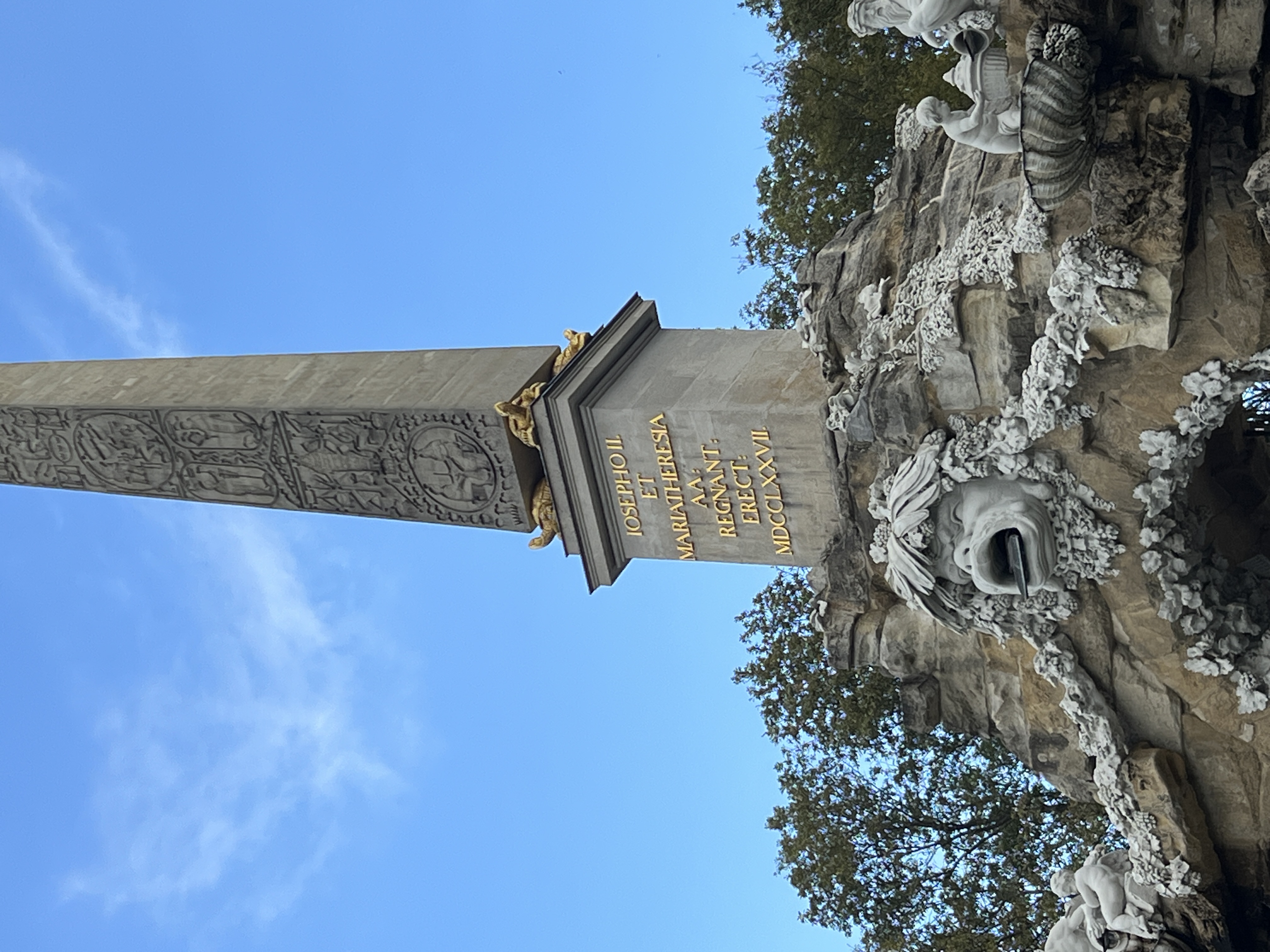
Gloriette
As we rounded a bend on one of the walking paths, we saw the Gloriette, a summer house type of structure designed to glorify the Hapsburg power.
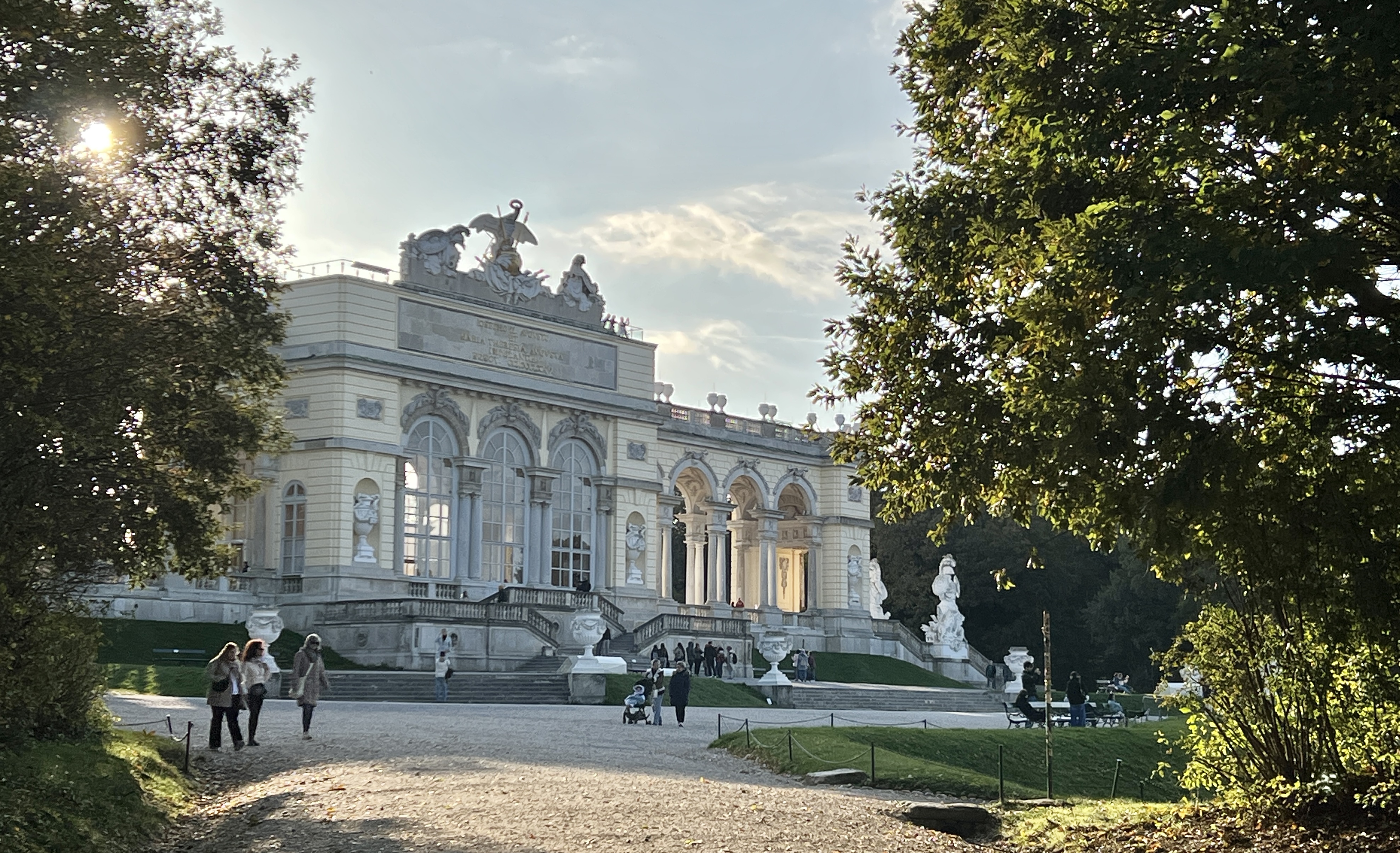
Set on a 200 foot hill facing the palace, it offers stunning views of the palace and Vienna in the background. We could see St. Stephen’s Cathedral rising above the other buildings in the city.
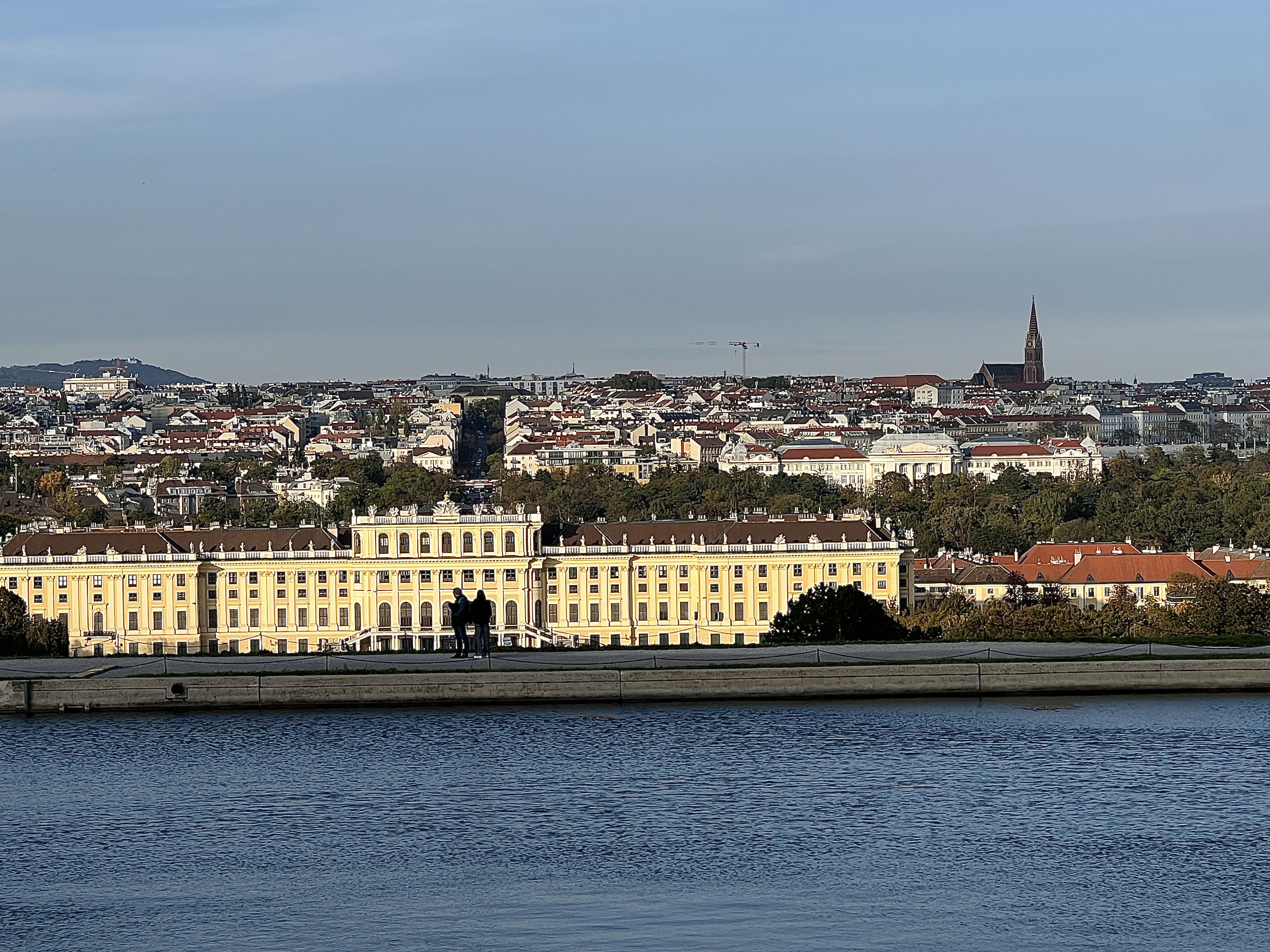
Neptune Fountain
As we neared the end of our walk around the grounds, we saw the beautiful Neptune Fountain. In the 16th to 18th centuries, monarchs liked using Neptune “driving across the seas in dominion over the watery element as a symbol for controlling the destiny of their nations.”
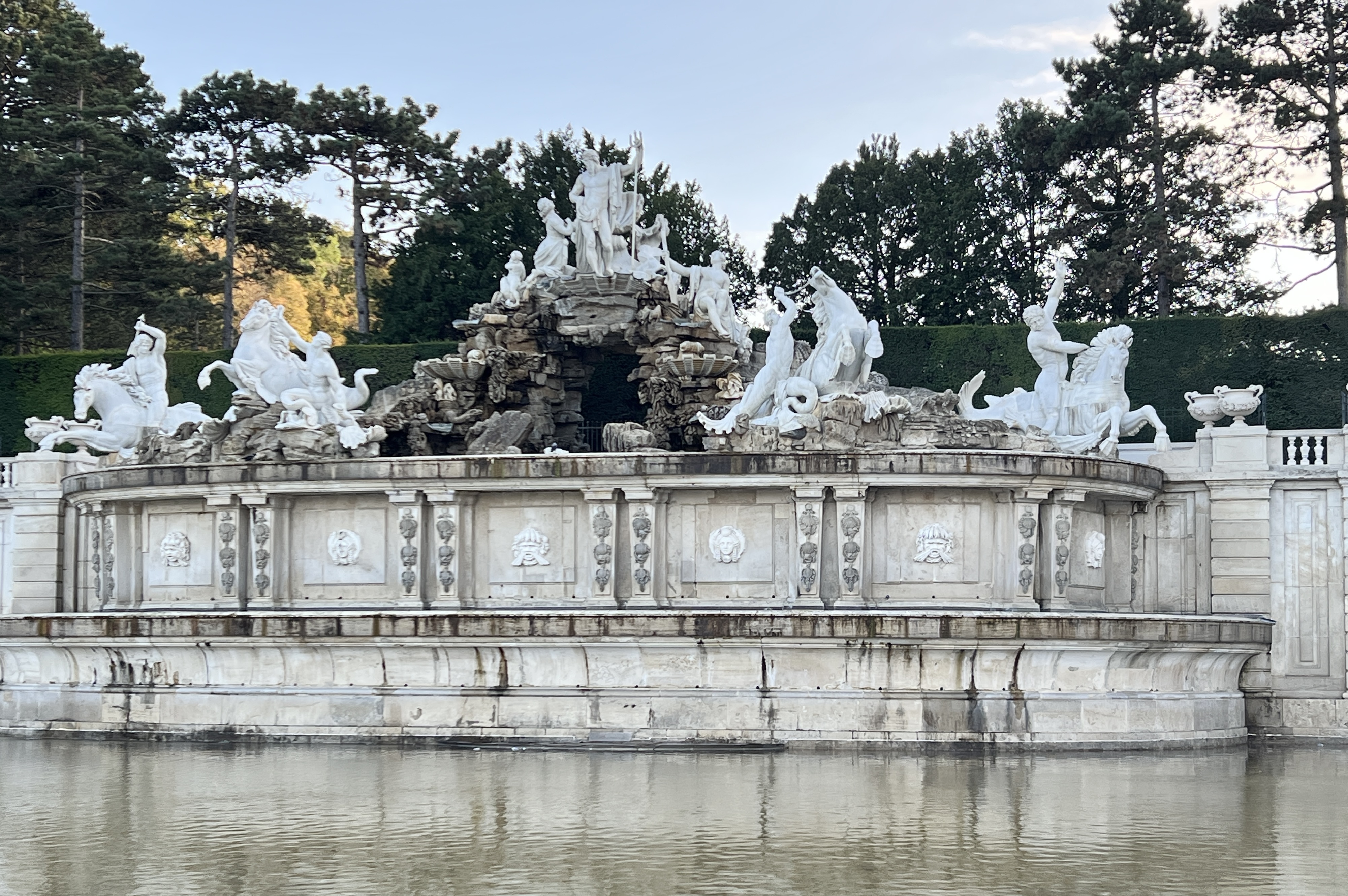
As we wandered the grounds, we also saw lovely little sculptures tucked into the woods.
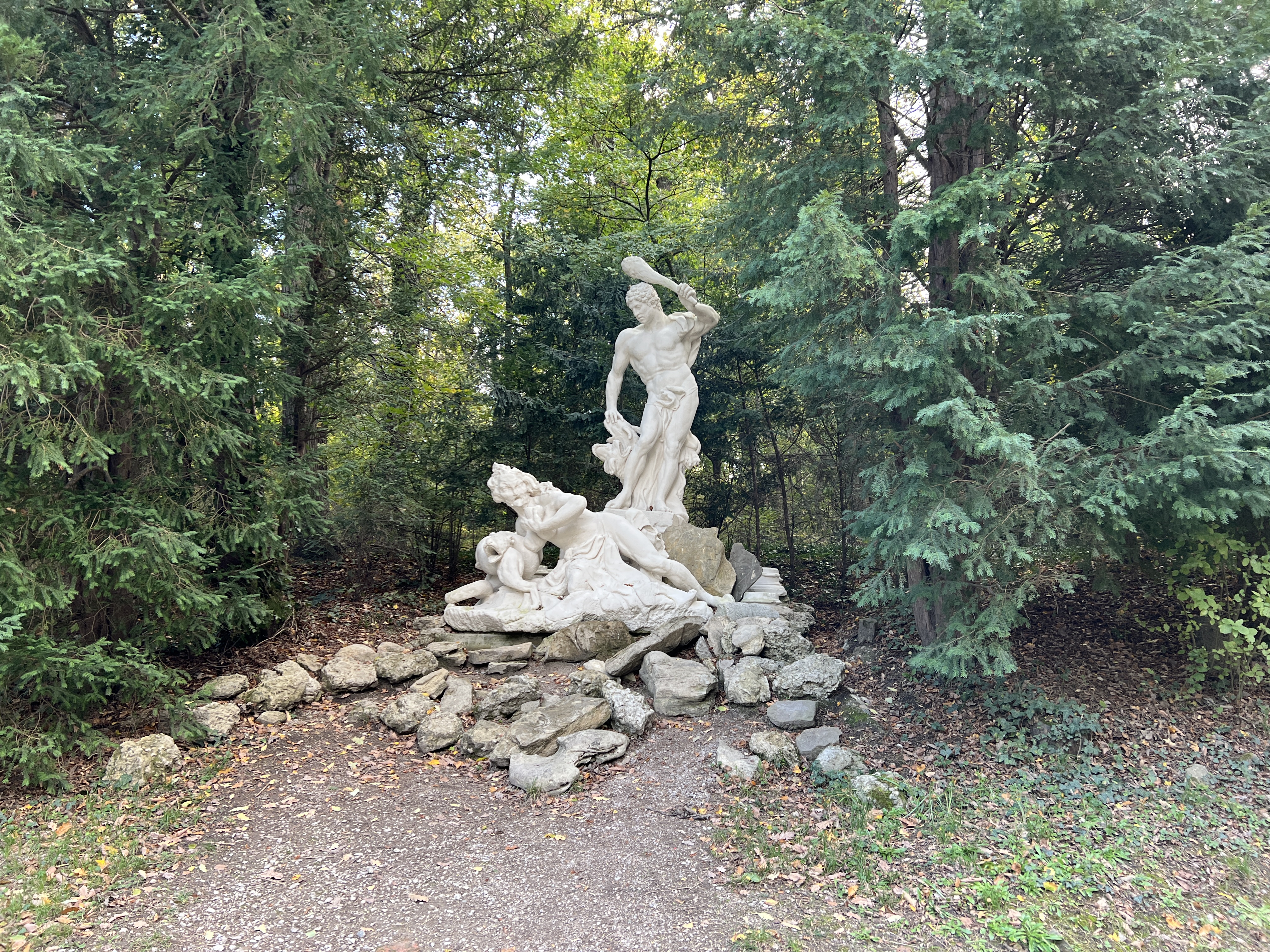
Austrian Wine
Before coming to Vienna, we had tasted grüner veltliner, Austria’s most famous white wine. We really like it and looked forward to visiting some Austrian wineries. After visiting a wine shop in Vienna and learning they were not able to ship to the US, Paul was even more interested in our tour.
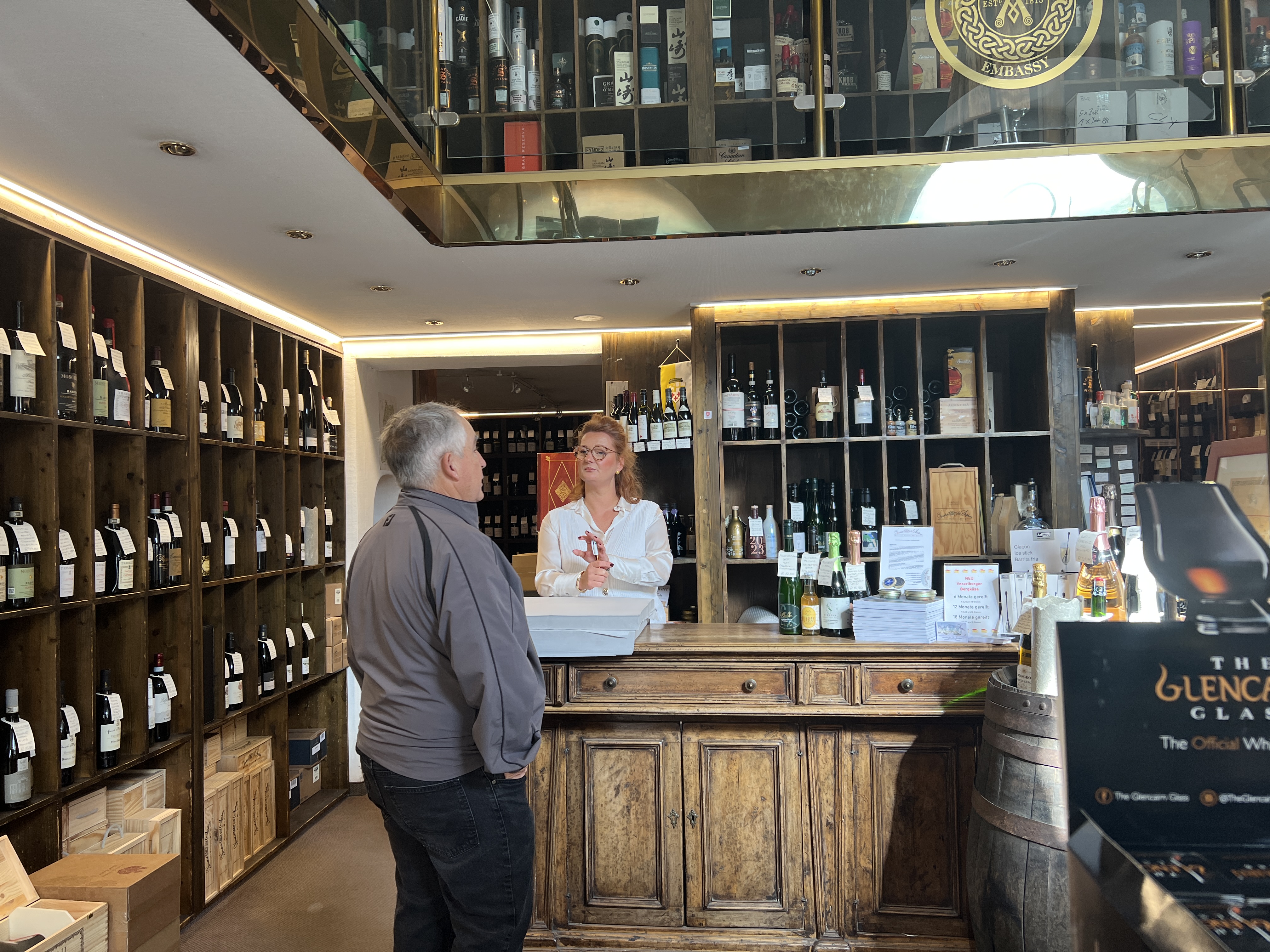
We loved our fabulous guide, Harold. He told great stories and gave us a concise overview of Austria’s long wine-making history.
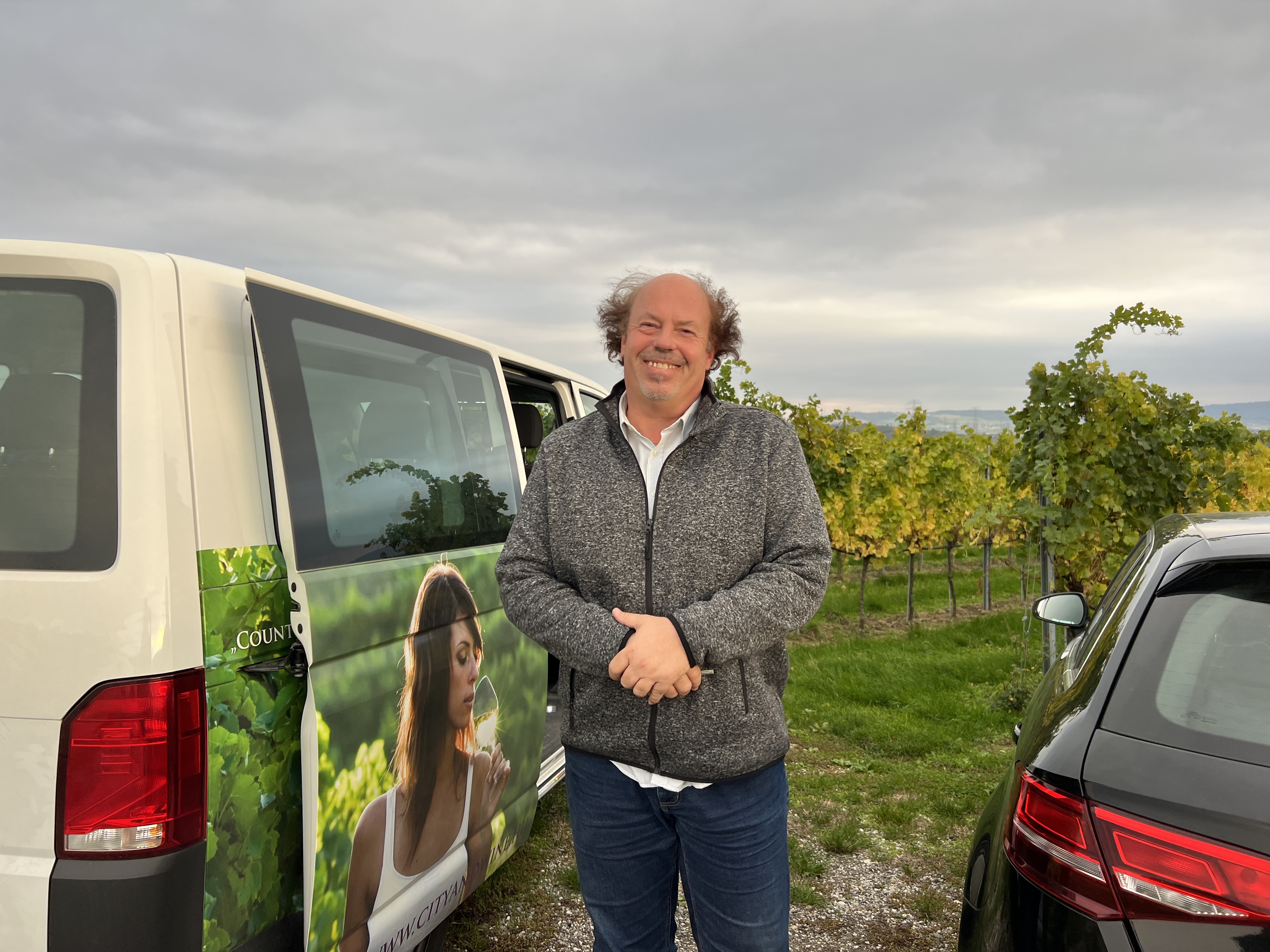
Austria has been making wine for about 4,000 years. Marcus Aurelius, Roman Emperor from 121-180, promoted the production of wine for its health, and is considered one of the gods of wine.
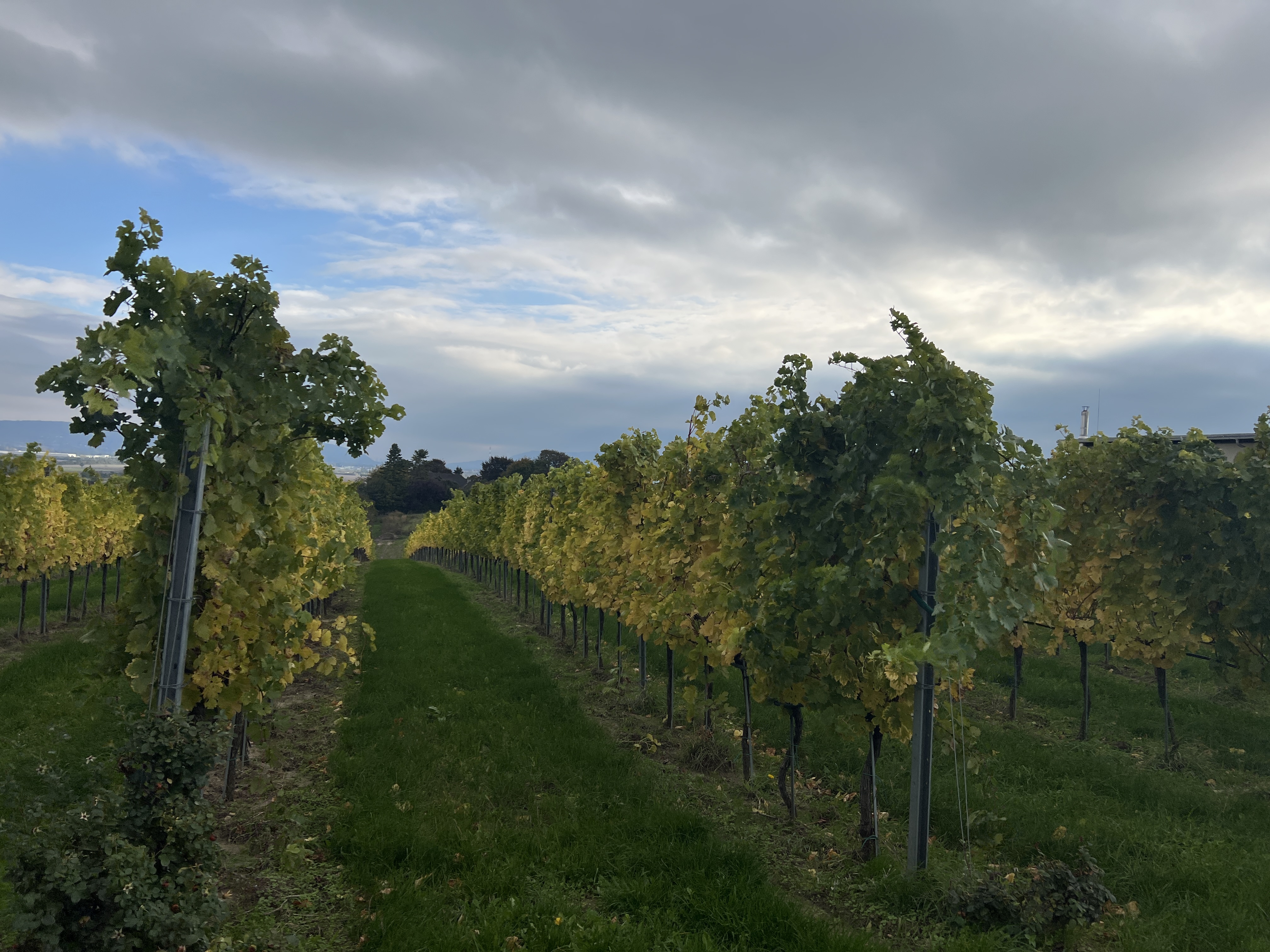
When we arrived at the first winery, I was happy to learn we would be doing our tasting inside. Although the patio looked lovely, it was a bit cold to be outside.

We had a great tour-wonderful wine, knowledgeable guide, fun people. My only problem was the size of the pours. Unlike most wineries that give you small tastings, Austrian wineries give you full-sized pours to taste. After three glasses each at the first two wineries, I had to pass on tasting the wine at the third winery.
